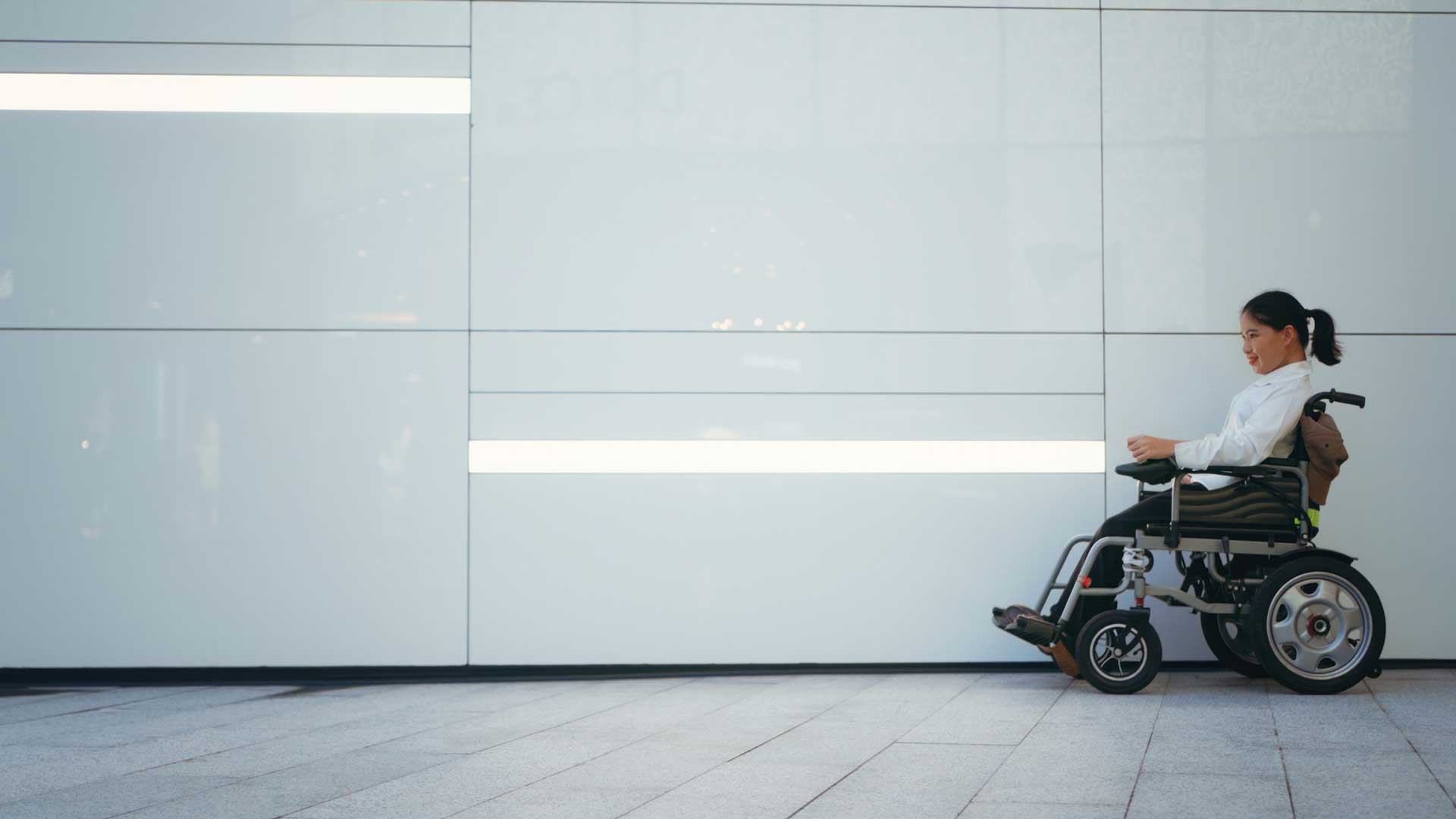Disabilities shouldn’t be a barrier for anyone to enter your business, so ensuring your space is accessible is crucial.
Which brings us to the topic of the Accessible Canada Act and why it’s crucial for businesses in 2024 to follow its mandates for their buildings and entryways.
What is the ACA?
Passed in 2019, the Accessible Canada Act (ACA), also known as Bill C-81, mandates businesses to develop and implement accessibility plans and regularly report their progress.
Similar to the ADA in the United States, the ACA is designed to eliminate discrimination against people with disabilities, focusing on various areas, including the built environment.
For commercial buildings, this means ensuring every aspect, starting with doors and entryways, meets accessibility standards. A subject close to our hearts, here at Select Door.
In this blog, we’re going to outline 5 key ways to ensure your commercial doors are compliant with Canadian accessibility requirements.
 Door width and clear opening
Door width and clear opening
Ensuring adequate door width and clear opening is essential for accommodating wheelchair users and others with mobility aids. The following dimensions ensure easy and unobstructed access through commercial doors:
- Minimum width: Doors must have a clear opening width of at least 34 inches (860 mm).
- Maneuvering clearance: Ensure adequate space for wheelchair users on both sides of the door.
Door Hardware
Accessible door hardware that’s easy to reach is another must-have. Ease of use is the name of the game. Handles and locks should be operable with minimal effort, accommodating people with limited hand strength or dexterity. Here are the details you need to know:
- Accessible handles: Operable with one hand, not requiring tight grasping, pinching, or twisting. Lever handles are ideal.
- Height of hardware: Located between 35 inches (900 mm) and 48 inches (1,200 mm) above the floor.
 Thresholds and flooring
Thresholds and flooring
Proper thresholds and flooring transitions are a must. They help prevent tripping hazards and ensure smooth movement through doorways, especially for people using mobility aids. Here’s what you need to know:
- Threshold Height: Should not exceed 1/2 inch (13 mm). If between 1/4 inch (6 mm) and 1/2 inch (13 mm), it must be beveled.
- Smooth Transitions: Provide a smooth transition at doorways to prevent tripping hazards.
Automatic Doors
Automatic doors enhance accessibility by allowing hands-free entry and exit, making it easier for people with disabilities to navigate through your building. They should be equipped with sensors to detect approaching individuals, ensuring they open promptly and safely.
- Power-assisted doors: These need to be equipped with sensors and controls that comply with accessibility standards for accommodating individuals with limited strength or mobility. The controls should be easy to reach and operate, with clear instructions and appropriate force settings to ensure everyone can use them comfortably and safely.
- Delay time: The delay time for automatic and power-assisted doors should be set to remain open long enough for safe passage. This means considering the speed at which individuals with mobility aids, such as wheelchairs or walkers, move.
 Signage
Signage
Proper signage with braille and tactile elements helps individuals with visual impairments navigate commercial spaces safely and efficiently.
- Braille and Tactile Signs: Provide appropriate signage, including braille and tactile characters.
- Contrast and Visibility: Ensure signs are high-contrast and easily visible.

Federal and Provincial Accessibility Legislation
In addition to the ACA, Canadian businesses also need to follow provincial laws such as the Accessibility for Ontarians with Disabilities Act (AODA). This legislation sets out integrated accessibility standards that encompass areas like information, communications, employment, transportation, customer service, and public spaces.
You can refer to the following acts, laws, and regulations, for a more detailed understanding of complying with legal standards and creating inclusive environments in Canada:
Acts, Laws, and Regulations
- The Accessible Canada Act (Bill C-81)
- The Accessibility for Ontarians With Disabilities Act (AODA)
- The British Columbia Accessibility Act (Bill M 219)
- The Accessibility for Manitobans Act (AMA)
- The Nova Scotia Accessibility Act
- Integrated Accessibility Standards Regulations
Design Standards
- Ontario Building Code
- Accessible Design for the Built Environment
- Design of Public Spaces Standard (Ontario)
Plans, Policies, and Reports
- How to Create an Accessibility Plan and Policy
- Creating Accessibility Policies and Multi-Year Plans
- A Comprehensive Guide for Developing Accessibility Policies and Plans
- How to Complete Your Accessibility Compliance Report (Public Sector)
- How to Complete Your Accessibility Compliance Report (Not-for-Profit and Private Sector)

Conclusion
Ensuring ACA compliance not only helps you meet the legal requirements for your building but, importantly, it enhances the accessibility and inclusiveness of your business. By following the guidelines we’ve outlined, and addressing potential issues proactively, you’re demonstrating that your business cares about providing a welcoming environment for everyone, starting with your commercial doors. We hope this blog has provided you with valuable insights into how you can make your entryways more accessible and more inclusive.